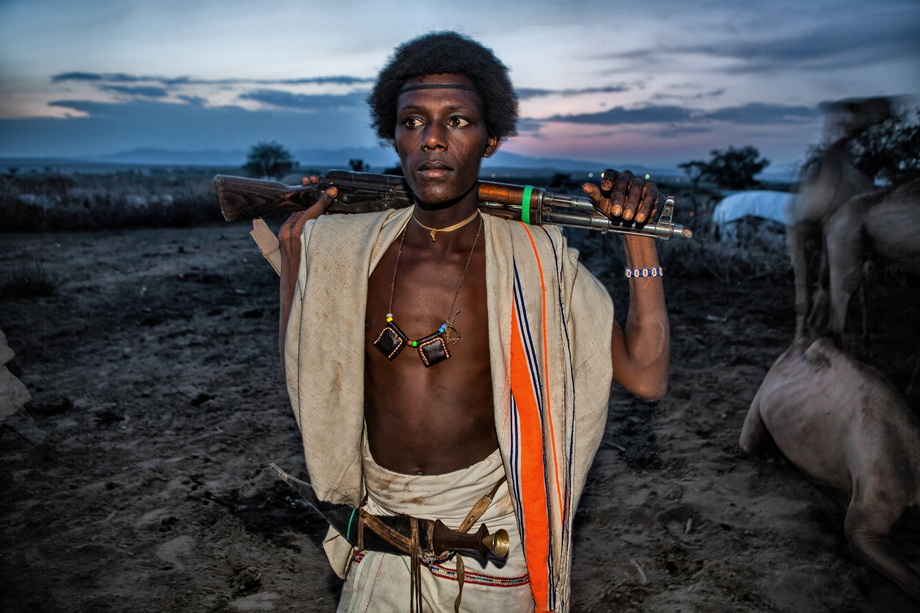The Homeland of the Afar
The Afar primarily inhabit the arid and unforgiving region known as the Danakil Depression. This area, one of the hottest places on the planet, is characterized by salt flats, lava fields, and active volcanoes. Despite these challenging conditions, the Afar have adapted remarkably, leveraging their knowledge of the land to sustain their communities.
Geographic Significance
The Danakil Depression, a geological marvel, lies below sea level and is renowned for its surreal landscapes and vast salt reserves. This region not only serves as the Afar’s home but also as the foundation of their traditional economy.
Cultural Practices of the Afar People
The Afar culture is deeply rooted in their nomadic lifestyle, with traditions and social structures reflecting their connection to the land and livestock. Their vibrant customs, dress, and social organization make them one of the most distinctive ethnic groups in East Africa.
Traditional Attire
Afar men typically wear a white cotton garment called a sanafil, while women dress in colorful robes and adorn themselves with jewelry. These traditional outfits not only serve practical purposes in the hot climate but also symbolize cultural identity.
Clan-Based Society
Afar society is organized into clans, with leadership roles often held by elders. These clan leaders play a central role in decision-making, conflict resolution, and maintaining social harmony. The clan system fosters a strong sense of unity and community among the Afar.
Marriage Customs
Marriage is a pivotal institution in Afar culture, often arranged within clans to strengthen family ties. Dowries, usually in the form of livestock, are an essential part of the marriage process, reflecting the importance of cattle and camels in their society.
The Afar Economy: Salt, Livestock, and Adaptation
The Afar people rely on a diverse range of economic activities to survive in their harsh environment. Livestock herding, salt mining, and trade form the backbone of their livelihood.
Salt Mining in the Danakil Depression
The salt flats of the Danakil Depression have been a vital resource for the Afar for generations. Using traditional methods, they extract salt blocks, which are transported via camel caravans to markets across Ethiopia. This ancient trade route has not only sustained their economy but also connected them to neighboring communities.
Livestock Herding
Camels, goats, and cattle are central to the Afar way of life. These animals provide milk, meat, and trade opportunities, and their importance extends beyond material value to social and cultural significance.
Adapting to Modern Challenges
With the rise of industrial salt production and climate change affecting grazing lands, the Afar have faced growing challenges. Many are adapting by incorporating small-scale agriculture and alternative trade practices into their livelihoods.
Resilience Amid Challenges
The Afar people have demonstrated incredible resilience in the face of modern challenges. Environmental changes, political tensions, and external pressures threaten their traditional way of life, but their commitment to their heritage remains strong.
Climate Change and Resource Scarcity
Droughts and changing weather patterns have reduced access to water and grazing land, impacting the sustainability of their pastoral lifestyle. The loss of these resources has forced many Afar communities to adapt or relocate.
Cultural Preservation
Despite these difficulties, the Afar continue to uphold their traditions. Efforts to document and share their culture, including traditional practices like salt mining, have helped raise awareness of their unique heritage and the challenges they face.
Ethical Tourism and Cultural Awareness
The Afar region has become a destination for intrepid travelers drawn to the dramatic landscapes of the Danakil Depression and the cultural richness of its inhabitants. Tourism provides an opportunity to support Afar communities, but it must be approached responsibly.
Promoting Ethical Tourism
Visitors to the Afar region are encouraged to respect local customs, engage with local guides, and support community-based tourism initiatives. By doing so, they can help preserve the Afar’s way of life while contributing to their economic well-being.
Conclusion
The Afar people are a testament to human resilience and the enduring power of cultural identity. Their ability to adapt and thrive in one of the world’s most extreme environments is both inspiring and humbling. As modernization and environmental challenges continue to reshape their world, efforts to support and preserve the Afar’s traditions are more important than ever.
Exploring the Afar culture and their stunning homeland offers a rare opportunity to witness a way of life that is deeply connected to nature and history. By respecting and celebrating their heritage, we can help ensure that the Afar people continue to flourish for generations to come.

















0 Comments
Have thoughts or questions? Share your insights below and join the journey back in time to discover the world’s enduring traditions!